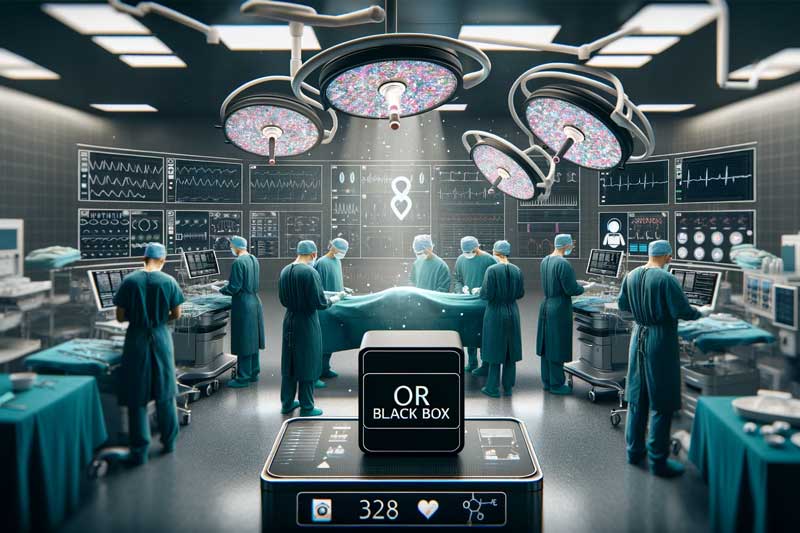For decades, planes have used black boxes to record information about flights, including conversations that may be taking place in the cockpit. The information gathered by the black box is most often used when things go wrong. Once it is accessed, the black box can provide investigators with important data about what led up to the moments that, for example, a plane went down.
That same technology is making its way into the healthcare industry. An OR Black Box can record what is happening in an operating room, gathering important data that hospitals can use in a number of ways. Here’s how the OR Black Box works and the different ways the data can make an impact.
How it works
The OR Black Box is a set of video cameras that captures video and audio of a procedure in an operating room. That means it tracks everyone’s movements and all of the instruments being used, it records all audio, and it also records all of a patient’s vital signs and responses to what is happening. Artificial intelligence can then make sense of the recordings to whittle down the millions of data points collected and turn them into reports that hospitals are using to make their surgeries safer and more efficient.
How it is used
Evaluating surgical procedures can be a tricky process because of unreliable data. Either people involved in the procedure are being asked to remember what happened afterwards where they might not recall exact details, or auditors are present who might influence events in a way that creates inconsistencies with procedures where auditors are not present.
The OR Black Box offers an unbiased view of exactly what happened during a procedure. As of early 2024, more than two dozen hospitals in the United States and Canada were using OR Black Boxes. Some of the benefits of an OR Black Box include:
- Full transparency into procedures: The biggest benefit of an OR Black Box is the opportunity to see that everyone is doing what they are supposed to be doing. Are all of the steps of a safety checklist being followed? Is everything being prepped appropriately before a procedure begins? “It’s providing this treasure trove of data,” Dr. Jeff Salvon-Harmon, the vice president of safety at the Institute for Healthcare Improvement, told The Boston Globe. “It’s giving us vast new insights into the quality of procedures and the quality of performance.”
- Actionable data: That treasure trove of data allows hospitals opportunities to see what can be improved. The reports give the hospital an idea of how often steps are being followed—or accidentally skipped—and what procedures might need to be reinforced with staff. Quality is one of the many metrics hospitals track as they monitor their performance goals, and the OR Black Box can provide valuable information in that area.
- Teaching opportunities: Boston Children’s Hospital is using an OR Black Box in a simulated operating room, where surgeons go to practice, essentially. The hospital is allowing them to get familiar with the technology as they do so. Other hospitals engaged in medical training find the technology helpful for residents to get a sense of how they performed a surgery.

Some hospitals are using an OR Black Box in a trial sense. One Boston hospital is using it in just two of its 16 operating rooms before it decides whether it will adopt it across its entire hospital group. The biggest concerns in the medical profession are around privacy and liability. Even though most of the data collected by an OR Black Box is anonymous—faces are blurred and voices are distorted—it doesn’t take a detective to match identities to information in hospitals with only a couple of devices. If something goes wrong in a procedure, lawyers would likely try to obtain video of the procedure in a malpractice suit, even though there are protections against using the recordings in lawsuits.
Successful hospital implementations have involved clear communication about the devices and how they can and can not be used. Experts hope that the positives of the technology outweigh the potential negative issues. In fact, some think that the technology should be extended to other high-risk areas of a hospital, such as emergency departments or intensive care units.
New, effective technologies are often met with resistance from those who fear it can be used in ways other than it was intended. When it comes to an OR Black Box, the intent is to make surgeries as safe as they can be by using unobjectionable data to improve those procedures. That seems like a message that, if communicated effectively, anyone can get behind.
- What Data Can Bring to California’s Investment in its Ports - July 25, 2024
- Unlocking the Power of Data in the Utilities Industry - July 18, 2024
- How Analytics Can Help Your Wholesale Nursery Grow - July 17, 2024



